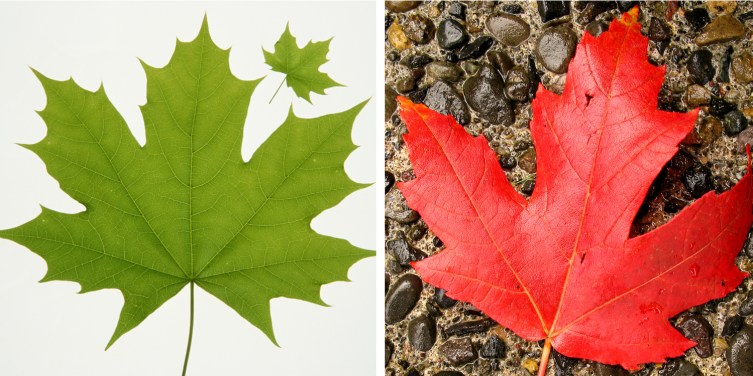The new Canadian $20 dollar bill made of polymer is displayed at the Bank of Canada in Ottawa May 2, 2012.
The maple leaf stands front-and-center on the Canadian flag, in the name of its most valuable hockey team, and, of course, splashed on its money. But upon redesigning its bills two years ago, the Bank of Canada might have bungled its national symbol. Botanists are saying that the leaf — which adorns the nation’s new $20, $50 and $100 notes — is a Norwegian maple leaf, not a Canadian sugar maple leaf. Oops.
The new bills, notable for being made of plastic (a point that has already taken some heat, literally) were introduced starting in November 2011, show a leaf that looks slightly different from the country’s iconic maple leaf. Botanists and scientists say that, instead, a Norwegian maple leaf features prominently on the new dollars.
(MORE: Paying with Plastic: Canada Introduces Polymer $100 Bill)
According to researchers, the famous Canadian sugar maple leaf depicts three lobes. The one on Canada’s new currency, however, depicts five lobes. No maple leaf native to the country has such characteristics — though the Norwegian maple leaf certainly does.
On the other hand, the Bank of Canada claims that there is no error. “We created an image for the bank note that represents a stylized Canadian maple leaf, if you will, so that it wouldn’t represent any specific species, specifically not the Norway maple,” spokeswoman Julie Girard told the Washington Post. Girard also pointed out that the bank brought in a tree specialist to help with the design.
(MORE: Is Canada’s Plastic Money Actually Melting?)
Some Canadian botanists beg to differ, though. “I think it’s just an after-the-fact excuse,” said Sean Blaney, a botanist at the Atlantic Canada Conservation Data Centre, told the BBC. A botany professor, Julian Starr, at the University of Ottawa concurred, “This could not be confused with a native species of Canada.” The tree is not completely foreign to Canada, though, having been imported from Europe and naturalized in North America. In fact, it’s among the most common trees in some parts of Canada. But he tells Reuters it’s hardly the legendary sugar maple that adorns the cultural icons of the Great White North. With all the commotion over the new Canadian bills, will there be sweeping changes, or will the Bank of Canada just prefer to just leaf this situation alone?







